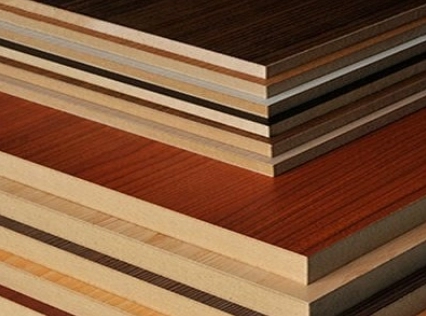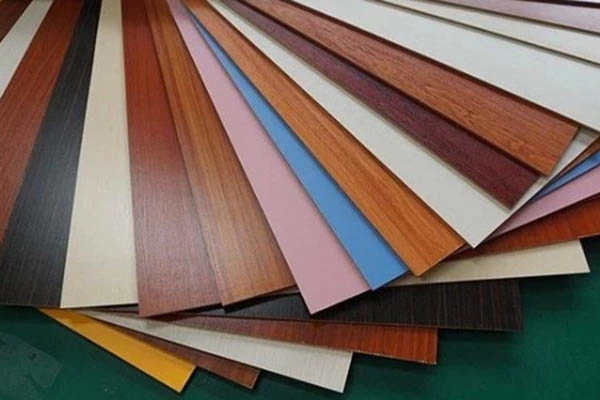In the world of woodworking and interior design, plywood is a popular material due to its versatility, strength, and cost-effectiveness. Among the many types of plywood available, melamine-faced plywood (MFP) and Fancy Veneered Plywood (FVP) stand out for their distinct finishes and applications. While both are used to create attractive and durable surfaces, they differ significantly in terms of composition, aesthetics, and uses. Understanding these differences can help professionals and DIY enthusiasts choose the right material for their projects.
Understanding Melamine Faced Plywood (MFP)
Melamine-faced plywood is a type of plywood that is covered with a melamine-impregnated paper layer on one or both sides. Melamine is a type of plastic resin that, when heated and compressed, forms a hard, durable surface. This process results in a smooth, water-resistant, and scratch-resistant finish, making MFP an ideal choice for areas that require durability and easy maintenance.
Key Characteristics of Melamine-Faced Plywood:
- Durability: The melamine layer provides a tough, wear-resistant surface that can withstand daily use, making it suitable for high-traffic areas such as kitchens, bathrooms, and commercial spaces.
- Water Resistance: Melamine is inherently water-resistant, making MFP a good option for environments where moisture is a concern, although it is not entirely waterproof and should not be exposed to excessive water.
- Ease of Cleaning: The smooth, non-porous surface of MFP makes it easy to clean and maintain. It resists stains and can be wiped down with a damp cloth, making it a popular choice for kitchen cabinets and countertops.
- Variety of Finishes: MFP is available in a wide range of colors, patterns, and textures, including wood grain, solid colors, and even abstract designs. This variety allows for flexibility in design and aesthetics.
- Cost-Effective: Melamine-Faced Plywood is generally more affordable than Fancy Veneered Plywood, making it a budget-friendly option for projects where cost is a significant consideration.
Understanding Fancy Veneered Plywood (FVP)
Fancy Veneered Plywood, on the other hand, is plywood that is overlaid with a thin layer of natural wood veneer. This veneer is typically made from high-quality hardwoods such as oak, walnut, cherry, or mahogany, giving the plywood a rich, authentic wood appearance. The veneer is applied using adhesives and then finished with varnish, lacquer, or other coatings to enhance its appearance and protect the surface.
Key Characteristics of Fancy Veneered Plywood:
- Aesthetics: The most notable feature of FVP is its natural wood appearance. Each sheet has a unique grain pattern, giving it a luxurious and high-end look that is highly sought after in furniture making and interior design.
- Authenticity: Since the veneer is made from real wood, FVP offers the warmth and beauty of natural wood, making it ideal for projects where aesthetics are a priority, such as cabinetry, furniture, and paneling.
- Customizability: FVP can be stained, polished, or finished in various ways to achieve the desired look. It can also be sanded and refinished over time, allowing for long-term maintenance and versatility in design.
- Durability: While FVP is durable, it is generally less resistant to scratches, moisture, and wear than MFP. The veneer layer, being natural wood, is more susceptible to damage and may require more careful handling and maintenance.
- Cost: Fancy Veneered Plywood tends to be more expensive than melamine-faced plywood due to the use of real wood veneers and the additional processing involved. However, the higher cost is often justified by its superior aesthetic appeal.
Comparing Uses and Applications
The choice between melamine-faced plywood and Fancy Veneered Plywood largely depends on the specific needs and goals of the project.
- Melamine-Faced Plywood is commonly used in applications where durability, water resistance, and ease of maintenance are key concerns. This includes kitchen cabinets, bathroom vanities, office furniture, and shelving. Its wide range of finishes also makes it suitable for modern, minimalist designs.
- Fancy Veneered Plywood, with its natural wood veneer, is typically chosen for high-end furniture, custom cabinetry, wall paneling, and other decorative applications where aesthetics and a natural wood appearance are prioritized. It is favored in residential interiors, upscale commercial spaces, and in any project where the beauty of real wood is desired.
Conclusion
Both melamine-faced plywood and Fancy Veneered Plywood offer distinct advantages depending on the requirements of the project. MFP is a practical, durable, and cost-effective option for functional surfaces that require resilience and easy care, while FVP is ideal for those seeking the elegance and richness of natural wood. By understanding the differences between these materials, designers, builders, and homeowners can make informed choices that best suit their needs, whether prioritizing durability, cost, or aesthetic appeal.
Post time: 09-04-2024













